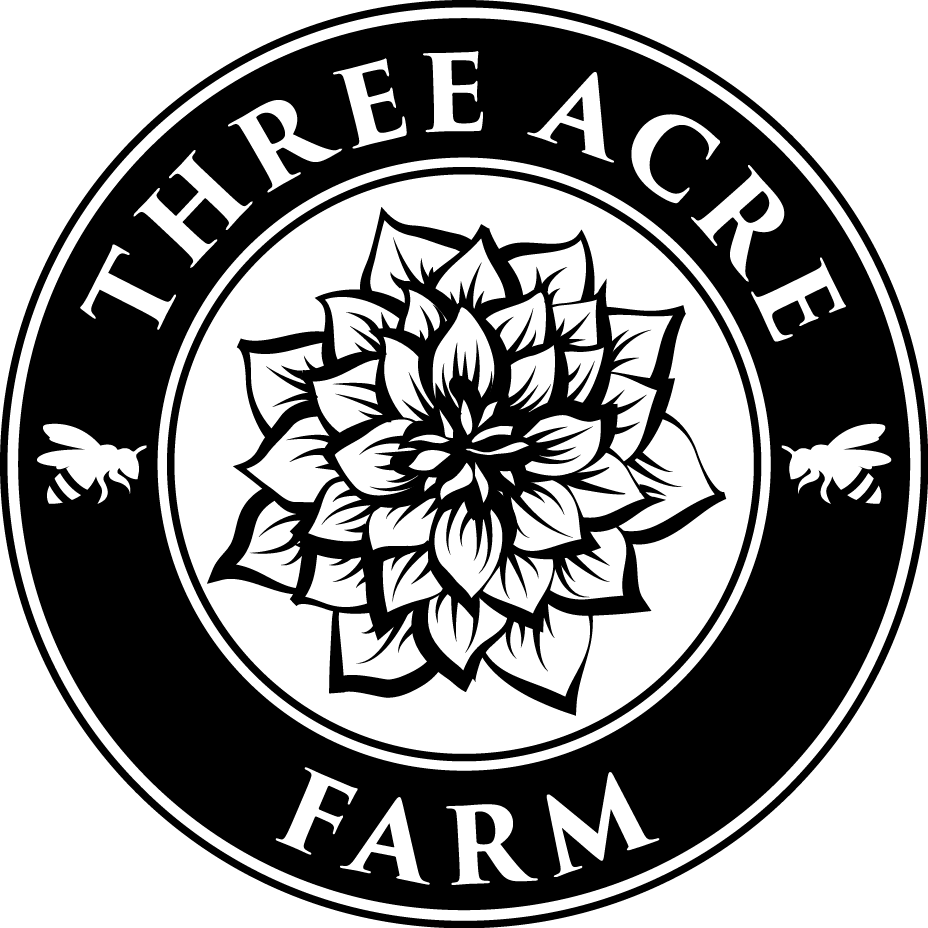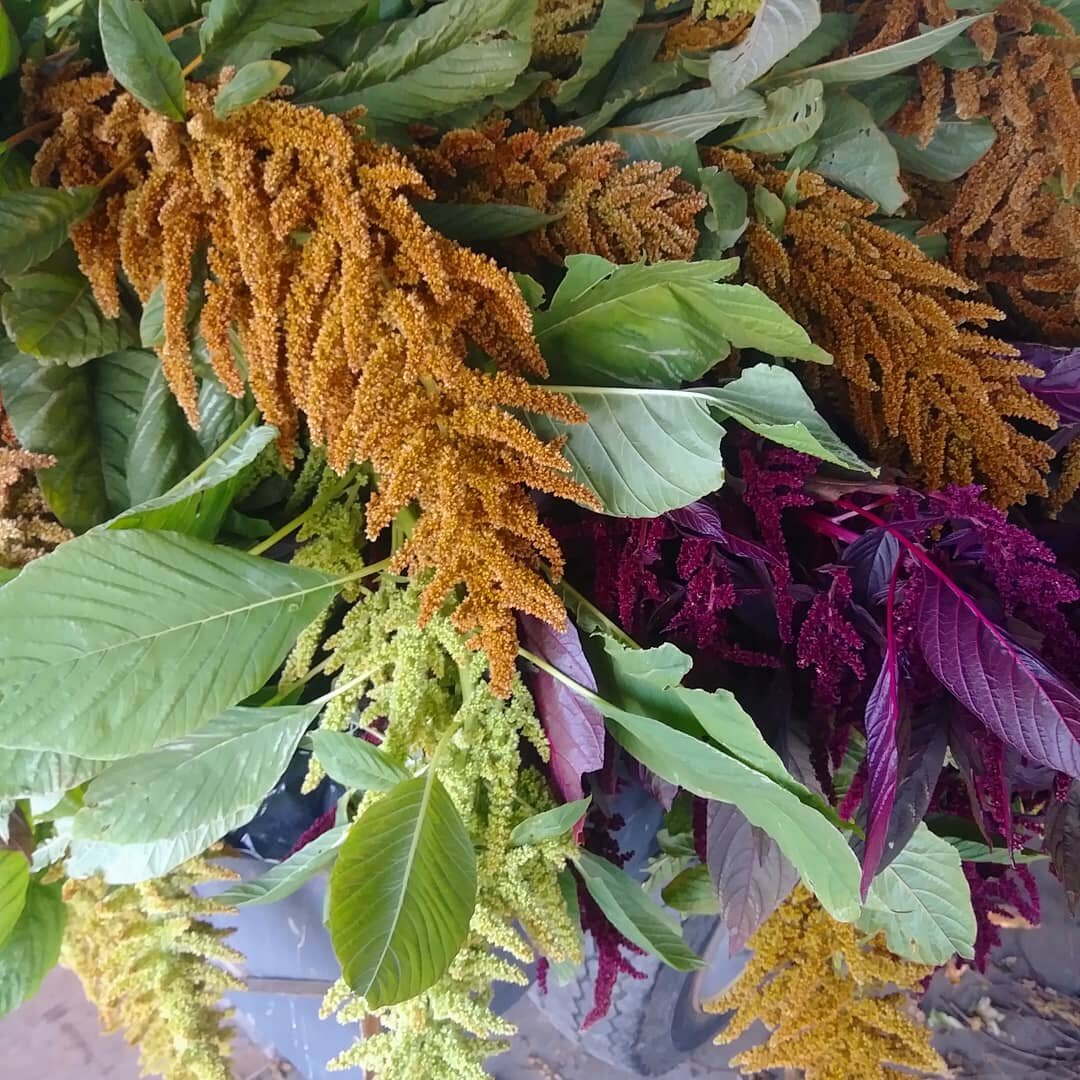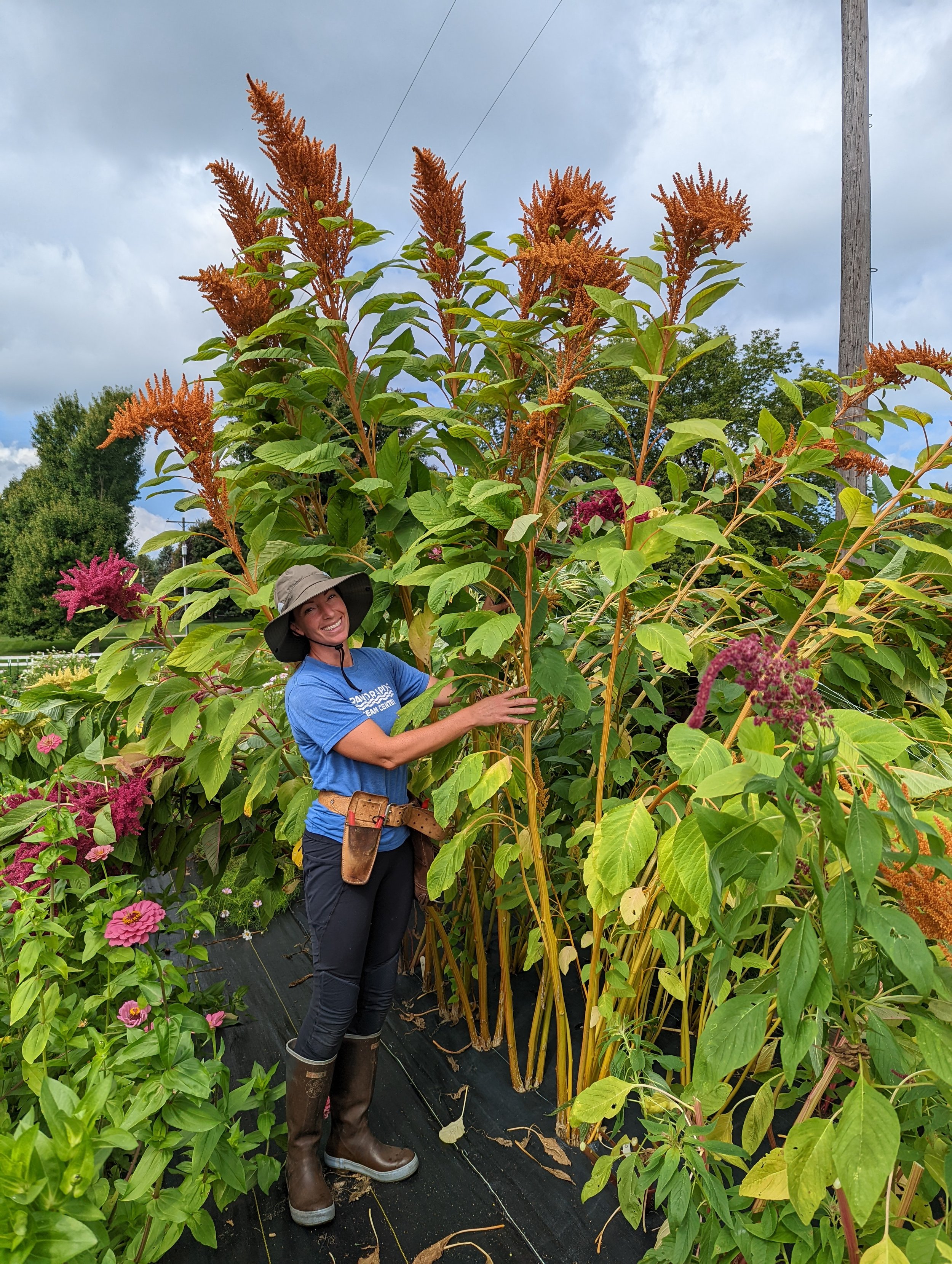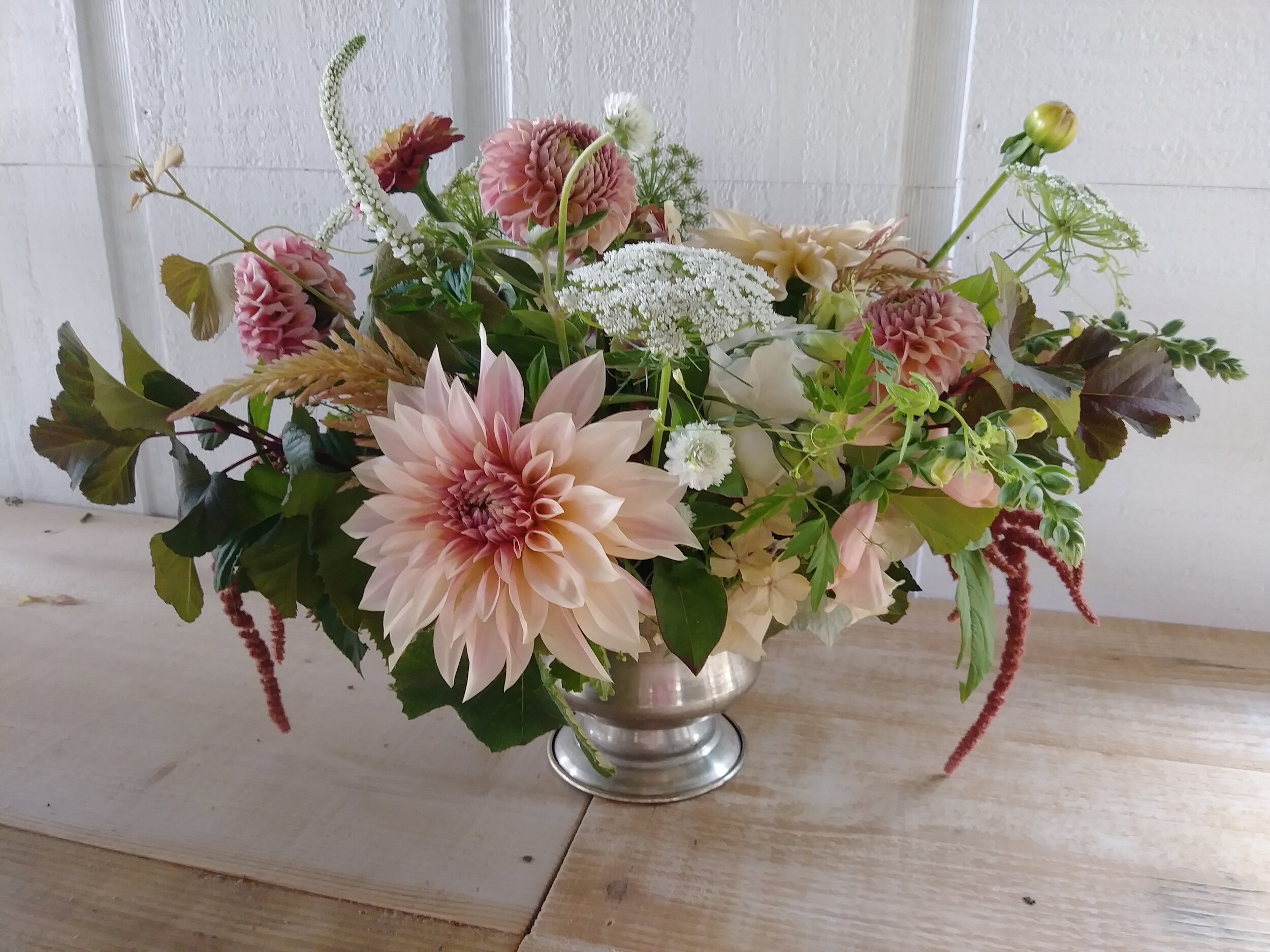How to Grow: Amaranth
How to Grow: Amaranth
Pronunciation: am-ah-ranth
Amaranth is a beautiful and unique flower to add to your cutting garden. Their velvety flowers are elegant looking in the vase and add some real drama to your cut flower arrangements.
It’s also fun and easy to grow. Amaranth plants can tower in the garden and some even make great ornamental plants, if you decide you’d rather enjoy them in the garden rather than the vase.
“Coral Fountain” Amaranth
Another bonus of Amaranth is it makes a great dried flower. I dried Amaranth two seasons ago for fall decor arrangements and it still looks great!
You may have heard of Amaranth before or even seen it’s seeds in the grocery store! Yes, there are several different species of Amaranth and they can be used for food, foliage or flowers. Amaranth seeds are tiny and often cooked/prepared like quinoa (another “ancient grain” that is popular today).
Let’s look at the Pros and Cons of growing Amaranth for cut flower use.
PROS
They are easy to grow.
They are very unique and fun to look at.
The plants are productive for a long period of time.
They add elegance and drama to arrangements. No other flower has the same draping, trailing quality.
They have a good vase life of 7-10 days, with proper harvest and care.
CONS
They can shed their seeds on your table if harvested too late.
They can sometimes grow so large that they can be unwieldy and difficult to use in arrangements (more about how to prevent that later…).
CHOOSING SEEDS
There are 2 main types of Amaranth grown for cut flower use.
“Spike” type Amaranth has an upright growing habit and the plants produce “spikes” or “plumes” that add height and drama to arrangements.
“Trailing” type Amaranth has a draping growth habit and the plants produce “ropes” that hang and drape in arrangements.
Both types are useful and worth growing. Here are a few of my favorite Amaranth to grow for cut flower use:
“Love-Lies-Bleeding” (trailing)
“Green Cascade” (trailing)
“Red Spike” (spike)
“Hopi Red Dye” (spike)
HOW TO SOW
Amaranth loves heat. They do not like cold temperatures and can’t handle frost, so don’t plant them too early. Don’t worry - they grow quickly when the soil warms up. They will begin to bloom in mid/late July and bloom until the fall frost.
Transplants or Direct Sow?
Amaranth is versatile and can be transplanted or direct sown.
The seeds are tiny, so you may need to use the “toothpick method” for planting seeds. Pour the seeds into a small bowl, wet the toothpick with your tongue, then dip it in the seeds to pick up 1-2 seeds on the toothpick. Transfer seeds to your trays or desired planting spot.
Transplants should be started indoors about 4-6 weeks before the last spring frost. They love heat, so be sure to keep them warm while they are growing indoors.
Direct sowing is another option (my preferred method!), as the plants grow very quickly. Direct sow in warm soil, after the threat of frost is passed. Sprinkle a couple seeds in spots spaced about a foot apart. You can thin the plants later (pluck out the unneeded seedlings).
PLANT SPACING
Amaranth plants can get quite large, so they should be spaced at about 12-15” apart.
GROWING ON
It is wise to provide support or netting to keep the plants from falling over. If you are growing just a few plants, large tomato cages may be sufficient. If you are growing a block or row of them, netting or metal supports would be best (like our “cattle panel supports” featured below).
“Coral Fountain” Amaranth
For best results and more manageable blooms, it’s advisable to “pinch” the plants. If they are not pinched, they tend to grow very large (over 6 foot tall!) and have thick stems that are much too big to use in most floral arrangements (below, you will see an example of Amaranth plants I forgot to pinch! Whoops).
To pinch Amaranth, cut back the center bud/stem when plants are about knee high. This will signal the plant to produce multiple stems that are smaller and easier to use.
If flowers are harvested and spent blooms are “deadheaded” (removed and not allowed to go to seed), the plants will continue to send up blooms until frost arrives.
“Chinese Giant Orange” Amaranth
STAGE OF HARVEST
Amaranth can be harvested after the color forms on the spikes or tassels, when about ¾ of the tiny little flowers are open. The spikes or tassels will continue to grow in size as they mature and they have a long harvest window.
However, be sure to harvest before they are too mature or they will drop their seeds all over your table!
“Fercita” Amaranth
Amaranth can be used fresh in arrangements or you can dry it to be used as an “Everlasting” flower.
To dry, simply place them in a bucket in a warm, dry place out of direct sunlight, and let them drape naturally… or hang them upside down. They should dry in about 2 weeks.
POST HARVEST CARE
After harvesting, remove most of the leaves to help the stems re-hydrate more quickly. This also allows the flowers to be more visible.
Amaranth requires no other special care.
“Coral Fountain” Amaranth in a wedding arrangement
QUESTIONS?
Ask them here and I’ll get back to you!
Ready for More?
If you’re serious about growing the garden of your dreams this year, register for my online course, “Backyard Cutting Garden 101”. You’ll find everything you need to plan, grow, harvest and arrange your stunning blooms. I can’t WAIT to help you grow! Click on the button below for all the details.








